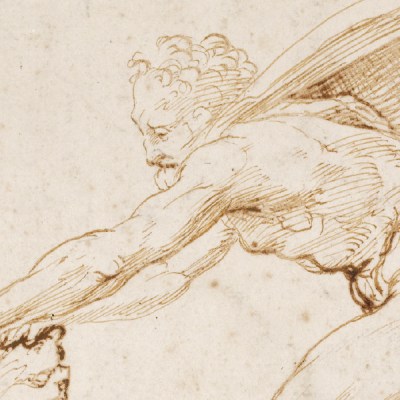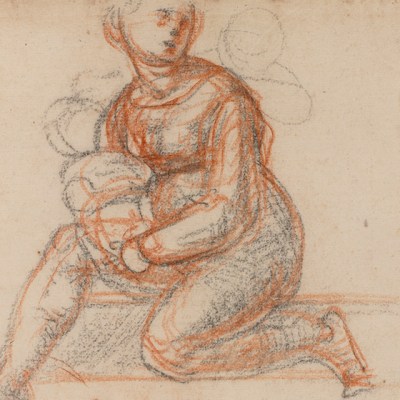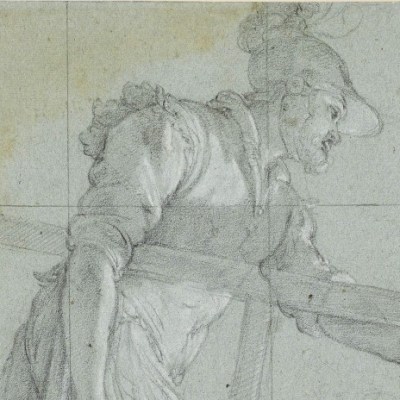On 11 July the Royal Collection Trust announced that 25 landscape drawings in an album at Windsor Castle, formerly attributed to the celebrated Victorian animal painter Sir Edwin Landseer (1803–73), have been identified as being by Thomas Gainsborough (1727–88). Although Gainsborough is best remembered for his elegant society portraits, he was also the finest English landscape painter of his generation, and once complained to a friend: ‘I’m sick of Portraits and wish very much to take my Viol da Gam and walk off to some sweet Village where I can paint Landskips…’ He was a prolific draughtsman, and his catalogue raisonné by John Hayes and Hugh Belsey comprises over 1,100 drawings, with 118 in the British Museum and 22 at the Victoria and Albert Museum, but only a single portrait study and two landscapes in the Royal Collection. Most of his landscape drawings are late works, which seem formulaic in comparison with his more naturalistic studies of the 1740s and ’50s. The reattributed sheets belong to this earlier period, when the young Gainsborough was producing views of the Suffolk countryside in the manner of Ruisdael, which later enchanted John Constable (1776–1837).
A Broken Tree-stump with a Peasant, and a Cow and Two Goats (c. 1745–55), Thomas Gainsborough. Royal Collection Trust/© Her Majesty Queen Elizabeth II 2017
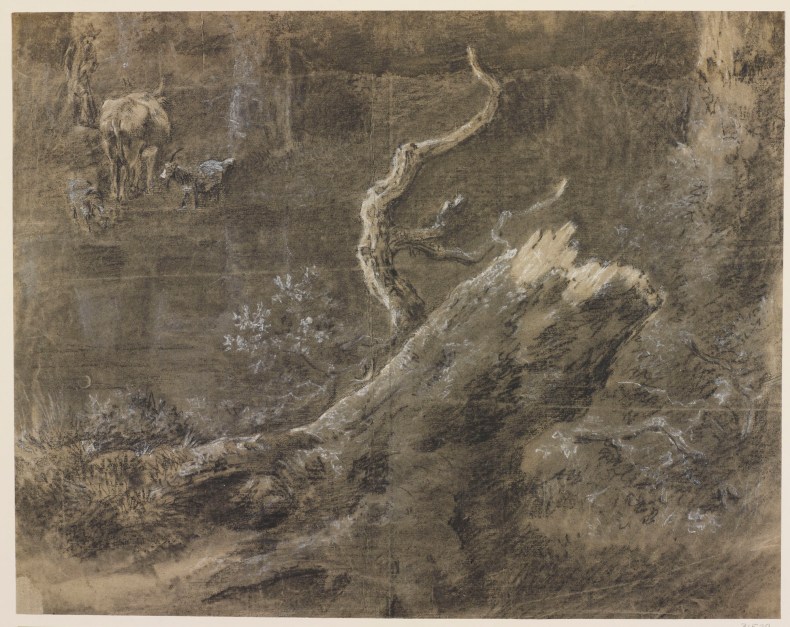
Individual works are routinely reattributed in major art collections, and this process is accelerated by the progressive digitisation and dissemination of images. The most systematic progress is made by dedicated re-cataloguing projects, like that culminating in the publication of the V&A’s new catalogue of Dutch and Flemish drawings in 2014. However, it is uncommon for such a large group of drawings to be ‘promoted’ to a more highly regarded master, especially one from an earlier century.
Queen Victoria lamented the death of the ‘great artist and kind old friend’ Sir Edwin Landseer, and in April 1874 paid his executors £250 for two volumes of sketches. One of these ‘with some Landscapes in it, which the Queen liked’ was the album of recently reattributed drawings. Naturally assuming they were by Landseer, the royal librarian Richard Rivington Holmes had them labelled as such. Thereafter, this quintessentially Victorian painter’s work languished until it was reappraised by modern scholars. Richard Ormond was clearly puzzled by the Windsor album, and in 1981 he astutely remarked: ‘Landseer is not generally thought of as a landscapist at all. Among his early drawings, however, are a considerable number of views, including a sketchbook in the Royal Collection with soft, chalky landscapes rather in the Dutch manner. There is little to link them with his later Scottish studies.’
It was noticed that the sketches are on 18th-century paper, and the late Delia Millar pointed out in her 1995 catalogue of the Victorian drawings at the Royal Collection that their traditional attribution ‘seems completely unfounded’. Instead, she suggested they belonged to the circle of Gainsborough, or the Norwich School. More recently, the former British Museum curator Lindsay Stainton recognised one of the drawings as a squared-up study for Gainsborough’s early painting of Cornard Wood, now in the National Gallery. One sheet is watermarked 1748 while a figure on the verso of another is very much in the artist’s early style, and Stainton has discovered further connections with other early paintings by the artist. She will argue that these drawings fundamentally change our knowledge of Gainsborough’s early landscapes in an article which will appear shortly.
After the dispersal of Gainsborough’s studio contents in 1799–1801, his drawings were eagerly acquired by connoisseurs and artists such as Sir George Beaumont and Joseph Farington. Constable owned 12, including two in the artist’s ‘early manner’ and three ‘very fine’ black chalk landscapes in his later ‘finished style’, and hung a pair of them in his parlour.
Wooded Landscape with Tree and Silver Birch in Foreground (c. 1745–55), Thomas Gainsborough. Royal Collection Trust/© Her Majesty Queen Elizabeth II 2017
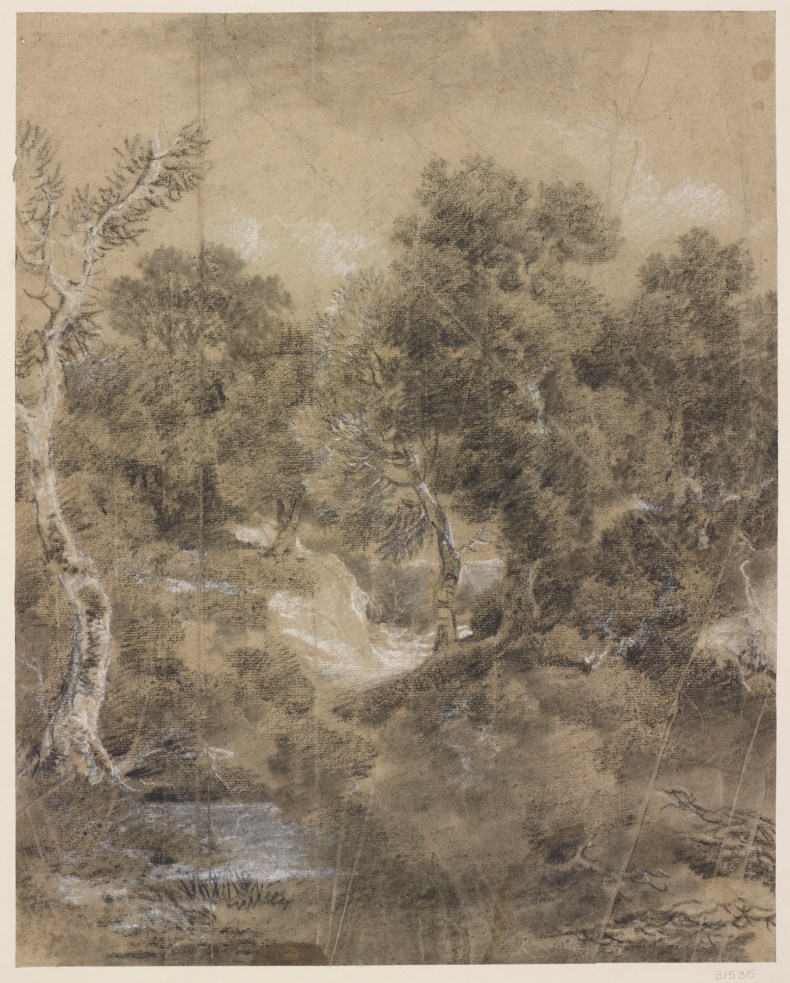
In 1807 the studio sale of Gainsborough’s contemporary, the animal painter George Stubbs (1724–1806), included no less than 575 drawings, but these have now mostly disappeared. The principal group remaining are the 42 studies for Stubbs’s engravings of The Anatomy of the Horse, published in 1766. These were acquired from the dealer Colnaghi, probably by 1833 and in exchange for a picture, by none other than Landseer. His brother Charles later bequeathed them to the Royal Academy. Landseer evidently used his great predecessor’s anatomical drawings as a study aid. Less accomplished in landscape, he presumably owned Gainsborough’s 25 early drawings for similar reasons.
And indeed, some of Landseer’s early works do suggest an interest in Gainsborough. First exhibited in 1827, his satirical painting The Monkey who had seen the World (at the Guildhall Art Gallery) is a light-hearted homage to the rococo, inspired by John Gay’s fable of 1727. It includes figures sheltered by a massive gnarled tree, like that in the Windsor sketch of A broken tree-stump with a peasant, and a cow and two goats. Completed two years later, Landseer’s Highland Whisky Still (at Apsley House) portrays a peasant family outside their hovel; a group comparable with numerous rustic scenes by Gainsborough. Further scrutiny of his paintings may elucidate this previously unrecognised source of inspiration.

